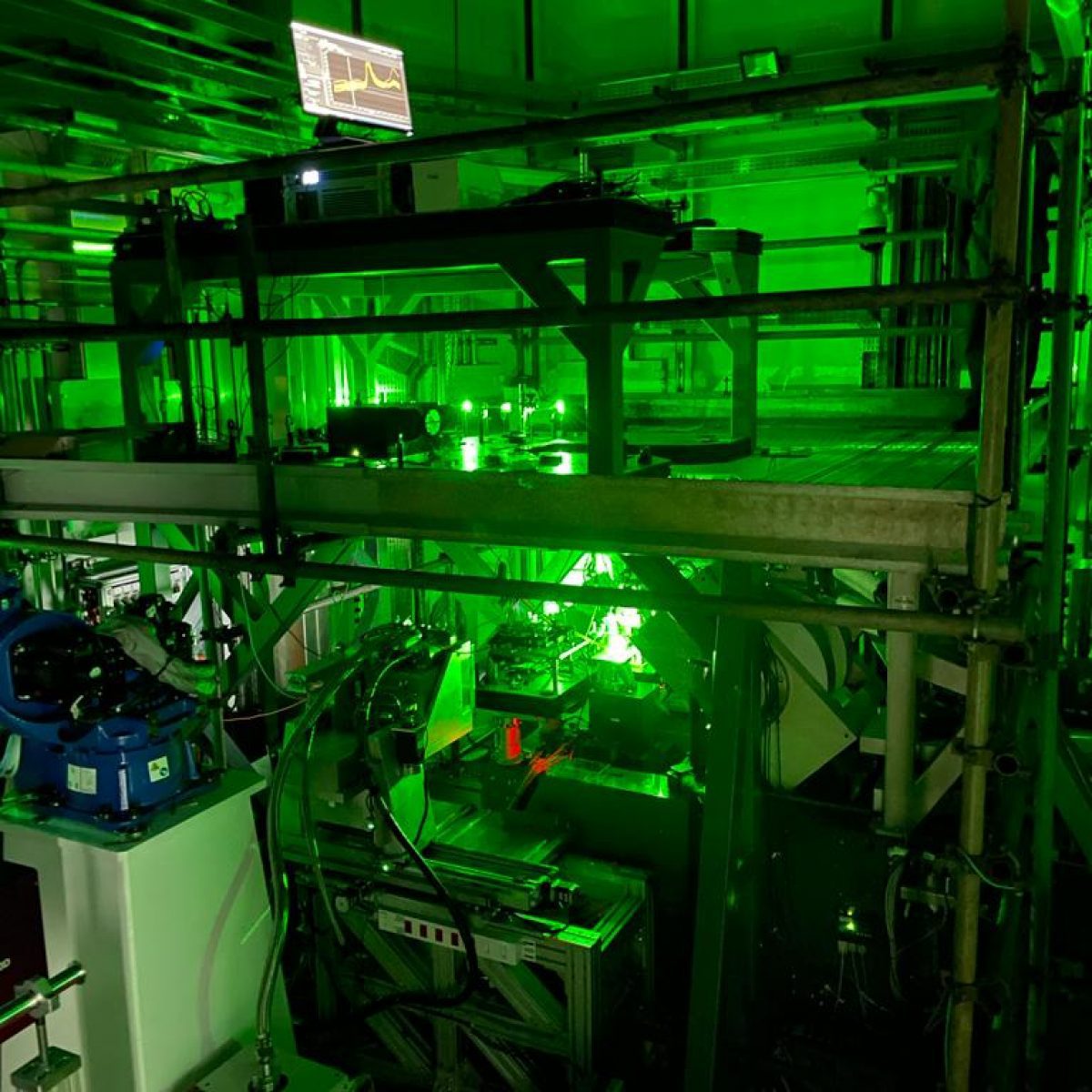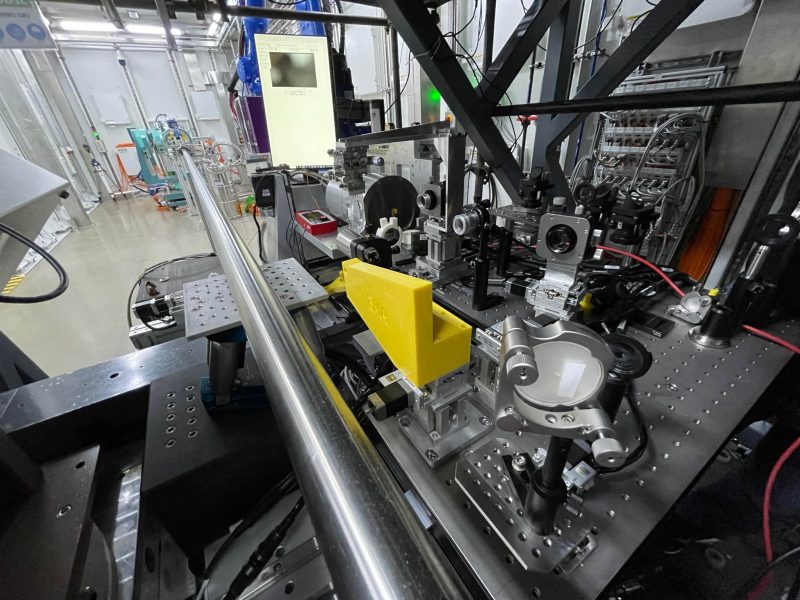
The first scientific paper published with data obtained at the EMA beamline studied the relationship between skutterudite’s superconducting properties and the distance between their atoms.
In Brazil, about 7.5% of the electricity produced is lost in transmission and distribution. This happens because the materials that make up these systems are not perfect electrical conductors and dissipate part of the energy, for example, in the form of heat. Similarly, even though electric cars are much more efficient than combustion-engine vehicles, they can still lose up to 15 percent of their energy during the charging process.
Thus, the challenges of achieving sustainable development lie not only in the availability of abundant, clean, and cheap energy, but also in the development of new, efficient, and low-cost energy transport and storage systems.
In turn, these new systems require research into new materials with special properties, such as superconducting materials. Superconductivity is the property that allows certain materials to conduct electric current without resistance and therefore without energy loss. Currently, however, a major limitation for the large-scale use of superconducting materials is their need to be kept at very low temperatures, close to absolute zero (-273.15°C), which requires their association with large cooling infrastructures. In these conditions, superconductors have applications in MRI machines and other high-performance medical equipment, as well as in scientific research equipment, such as the super-magnets used in particle accelerators.
Although superconductivity has been known for more than a century, its origin is still a matter of intense debate in the scientific community. Why do certain materials exhibit superconductivity while others do not? Once this is known, it will be possible to build materials that are superconducting even under ambient temperature and pressure conditions, allowing a true technological revolution, not only in the transmission and storage of energy but also in all kinds of electrical equipment in everyday life.
The movement of electrons without resistance along a superconducting material is understood so far to be possible by the union of two electrons (called Cooper pairs) that, with the help of a deformation in the material’s lattice (called a phonon), can overcome Coulombian repulsion and start moving as a single particle.
The question to which there is still no satisfactory answer is: what makes these electrons want to come together in pairs? Among the various hypotheses, one possibility is that this phenomenon would be connected to the distance between the atoms in the superconducting material.
Thus, in research published in the journal Materials, researchers from the Brazilian Center for Research in Energy and Materials (CNPEM), and collaborators from Germany, investigated two materials (LaPt4Ge12 and PrPt4Ge12) whose crystalline structure is known as skutterudite to test the hypothesis that superconductivity would be related to the distance between the atoms of the material. This was the first scientific paper published with data obtained at the EMA beamline of CNPEM’s synchrotron light source Sirius.
Skutterudite’s crystalline structure can incorporate different metals, such as Silver (Ag) and Nickel (Ni). Therefore, it is possible to create with some ease several materials with the same structure but varying the incorporated chemical elements. This property makes skutterudite an interesting family for the study of “unusual” properties in materials. Once its composition can be modified in a controlled way, it is possible to search for the real mechanism that governs this unusual property. In fact, several interesting properties are found in this type of compound, such as magnetic ordering, semiconducting behavior, and superconductivity.
Thus, the researchers used skutterudite not only to understand its superconductivity but also to test the hypothesis that superconductivity would be related to the distance between the atoms of the material. By applying very high pressures on the two compounds, to modify these distances in a controlled manner, the group sought to understand if there is an “optimum” distance for the appearance of superconductivity.
The results obtained with the aid of the EMA beamline allowed the group to state that, at least in these two compounds, superconductivity is not directly related to the distance between the atoms, and that the key to superconductivity must be associated with the extra electrons of the f-layer that the chemical element Praseodymium (Pr) has when compared to Lanthanum (La).
EMA beamline
The EMA beamline was designed to study materials subjected to extremely high temperatures, above 8000°C, or extremely low temperatures, close to absolute zero; or also to extremely high pressures, equivalent to twice the pressure at the center of the Earth. When matter is subjected to these extreme conditions, it can present new physical and chemical properties, changing, for example, from conductor to insulator, from magnetic to non-magnetic, and vice versa, or even present characteristics that do not exist under normal conditions, as is the case of superconducting materials.

Figure 1: Multi-purpose experimental arrangement of the EMA beamline, where green and infrared lasers are placed collinearly to the Synchrotron beam for in situ experiments under extreme pressures and temperatures.
Such conditions can only be revealed by a beam of high-brightness X-rays, such as the one produced by Sirius, from the combination of several techniques, such as X-ray diffraction, absorption spectroscopy, and inelastic scattering. In this beamline, it will be possible to answer questions about the atomic structure of materials and how they change according to the very low temperature or very high-pressure conditions required during the manufacturing process of a superconducting material.
The EMA beamline began receiving synchrotron light continuously in August 2021, and since then the team has been working on commissioning its components.
Since the beamline is designed to accommodate diverse experimental techniques and sample environments, external users are admitted as each experiment is commissioned. About 25% of the beamline’s time has been made available for users, while the rest is devoted to commissioning activities.
So far, 13 proposals from external users have been executed, with users from Rio Grande do Sul, Minas Gerais, São Paulo, Paraná, Maranhão, Ceará and Pará. The beamline team is working to complete the commissioning of the EMA’s experimental microfocus hutch by the end of 2022, which will allow a larger number of users to be admitted in 2023.
About Sirius
Designed and built by Brazilians and funded by the Ministry of Science, Technology and Innovation (MCTI), Sirius is one of the most advanced synchrotron light sources in the world. This great scientific equipment has at its core a state-of-the-art electron accelerator, which generates a type of light capable of revealing the microstructure of organic and inorganic materials. These analyzes are carried out at research stations, called beamlines. Sirius will support several beamlines, optimized for different experiments, and that will work independently of each other, allowing several groups of researchers to work simultaneously, in different research in the most diverse areas, such as health, energy, new materials, environment, among others.
The experimental techniques available in Sirius’ beamlines will make it possible to observe microscopic aspects of materials, such as the atoms and molecules that constitute them, their chemical states and their spatial organization, in addition to following the evolution over time of physical, chemical and biological processes that occur in fractions of a second. In a beamline it is also possible to follow how these microscopic characteristics are changed when the material is subjected to different conditions, such as high temperatures, mechanical stress, pressure, electric or magnetic fields, corrosive environments, among others. This capability is one of the main advantages of synchrotron light sources when compared to other high resolution experimental techniques.
Sirius’ beamlines are advanced scientific instruments, designed to solve problems in strategic areas for development. Initially, a set of 14 beamlines was planned to cover a wide variety of scientific programs. In total, Sirius will be able to house up to 38 beamlines.
ABOUT CNPEM
Sophisticated and effervescent environment for research and development, unique in Brazil and present in few scientific centers in the world, the Brazilian Center for Research in Energy and Materials (CNPEM) is a private non-profit organization, under the supervision of the Ministry of Science, Technology and Innovations (MCTI). The Center operates four National Laboratories and is the birthplace of the most complex project in Brazilian science – Sirius – one of the most advanced synchrotron light sources in the world.
CNPEM brings together highly specialized multi-thematic teams, globally competitive laboratory infrastructures open to the scientific community, strategic lines of investigation, innovative projects in partnership with the productive sector and training of researchers and students. The Center is an environment driven by the search for solutions with impact in the areas of Health, Energy and Renewable Materials, Agro-environment, and Quantum Technologies.
As of 2022, with the support of the Ministry of Education (MEC), CNPEM expanded its activities with the opening of the Ilum School of Science. The interdisciplinary higher course in Science, Technology and Innovation adopts innovative proposals with the aim of offering excellent, free, full-time training with immersion in the CNPEM research environment.
Through the CNPEM 360 Platform, it is possible to explore, in a virtual and immersive way, the main environments and activities of the Center, visit: https://pages.cnpem.br/cnpem360/
Source: Lombardi, G.A.; Mydeen, K.; Gumeniuk, R.; Leithe-Jasper, A.; Schnelle, W.; dos Reis, R.D.; Nicklas, M. Pressure Tuning of Superconductivity of LaPt4Ge12 and PrPt4Ge12 Single Crystals. Materials 2022, 15, 2743. DOI: 10.3390/ma15082743
Researchers from CNPEM and collaborators demonstrate the potential of naturally abundant and low-cost minerals for application in nanodevices
Study elucidates unprecedented processes of herbivore metabolism involved in the efficient degradation of plant fibers